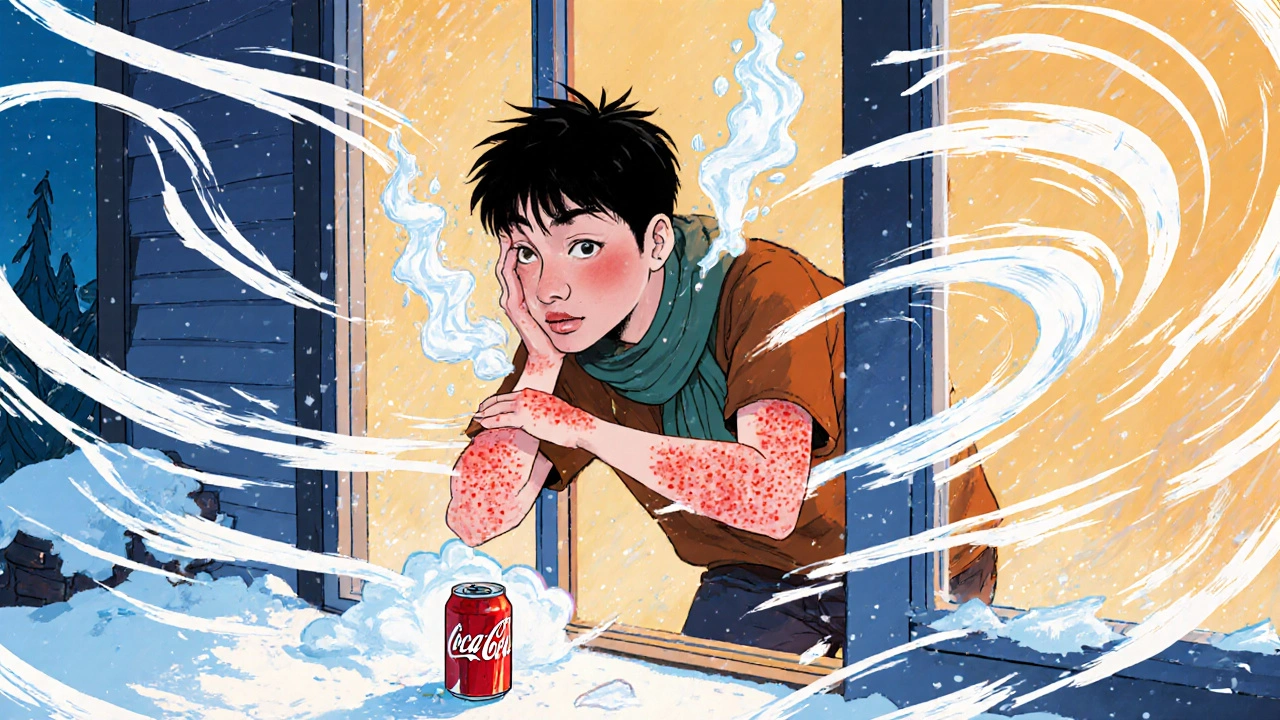Cold-Induced Hives: Triggers, Treatments, and What Really Works
When your skin breaks out in itchy, red welts after stepping into a cold room or grabbing an ice-cold drink, you might be dealing with cold-induced hives, a skin reaction triggered by exposure to cold temperatures. Also known as cold urticaria, this condition isn’t just an annoyance—it can turn a simple winter walk into a painful, swollen experience.
Cold-induced hives happen when your body overreacts to cold, releasing histamine and other chemicals that cause swelling and itching. It’s not an allergy to cold itself, but rather a physical trigger, like pressure or heat, that sets off the immune system. Some people only get hives after swimming in cold water, while others react to a breeze or even holding a cold soda can. The severity varies: mild cases fade in minutes, but severe reactions can lead to dizziness, swelling of the throat, or even anaphylaxis—something you can’t ignore.
Managing this condition starts with avoiding sudden cold exposure, but that’s not always practical. The most common and effective treatment is antihistamines, medications that block histamine and reduce itching and swelling. Non-drowsy options like cetirizine or loratadine work well for daily use, while stronger ones like hydroxyzine may be needed for stubborn cases. Some patients find that taking antihistamines before cold exposure helps prevent flare-ups. There’s no cure, but many people see improvement over time—some outgrow it entirely within a few years.
What you won’t find in most guides is how often people misdiagnose this. Many think it’s eczema, a food allergy, or even stress rash. But if your hives always show up after cold contact—and disappear when you warm up—you’re likely dealing with cold-induced hives. Testing is simple: a doctor can do an ice cube test, placing ice on your skin for a few minutes to see if a welt forms. It’s quick, safe, and tells you exactly what you’re dealing with.
There’s also a connection between cold-induced hives and other immune-related conditions. People with autoimmune disorders or chronic infections sometimes develop this type of urticaria. It’s not common, but if you’ve had hives for more than six weeks and can’t find another cause, it’s worth looking into underlying issues. You’re not alone—this condition affects more people than most realize, especially in colder climates.
Below, you’ll find real-world advice from people who’ve lived with this, along with clear comparisons of treatments, how to avoid triggers without giving up your life, and what to do if things get serious. No fluff. Just what works—and what doesn’t.

Cold-Induced Urticaria: What to Do When Hives Appear After Cold Exposure
Cold-induced urticaria causes itchy hives after exposure to cold temperatures. Learn how it works, how to diagnose it, and what treatments actually help-plus safety tips for swimming, winter weather, and daily life.